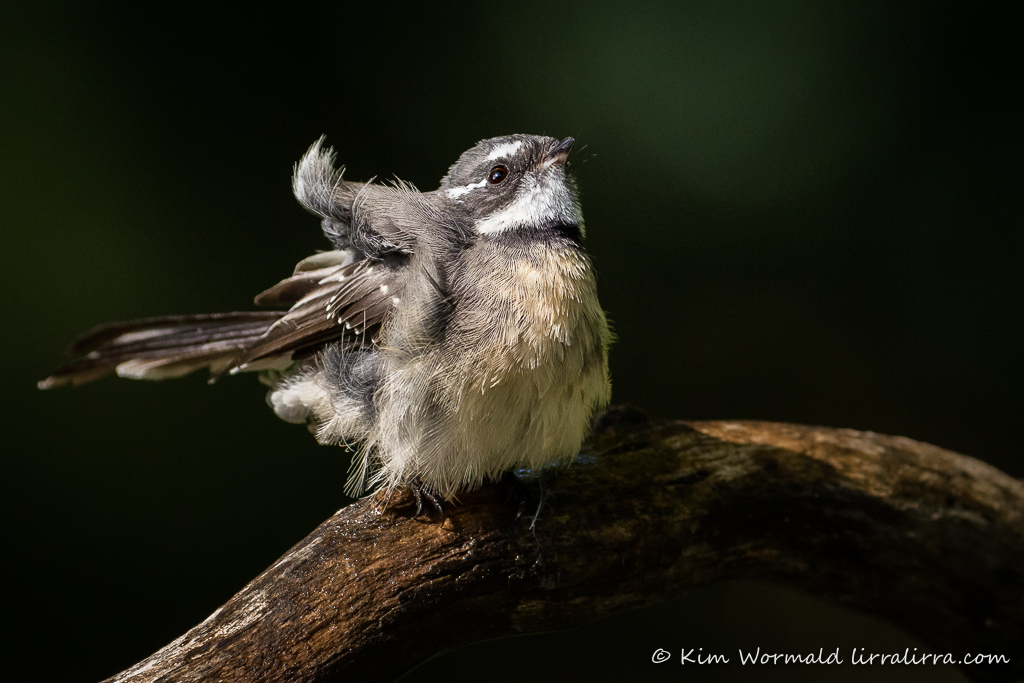Following on from last week’s post is an adult fantail captured mid-shake after bathing.
 Grey Fantail (Rhipidura albiscapa)
Grey Fantail (Rhipidura albiscapa)
1/1600, f/7.1, ISO 1600
Adult Grey Fantails often retain buff colouring on their breasts, below their black-banded white throats.
Six sub-species of Grey Fantail can be found across Australia where their ranges overlap in places. It’s interesting to look at fantails closely to work out which species they are. Several years ago a fantail visited my garden that looked and behaved like an inland albicauda. We presumed it might have joined with birds migrating from Victoria. It’s outer tail feathers were much whiter than the albiscapa and it foraged by flying about a metre above the ground (rather than higher up around the trees) as fantails do in more arid environments.
Providing fresh water for garden birds is important for more reasons than drinking. Birds also need to bathe to help remove parasites, cleanse their feathers and to help regulate their temperature on hot days. I mention safety considerations about birdbaths in an earlier post: Water birds and waterbirds
Happy birding
Kim
~ thank you for visiting and commenting
~ use the subscribe box if you’d like to receive a weekly email when lirralirra is updated
PS Apologies that this week’s post is shorter than usual, I’m working on a photography presentation that needs my attention

Luckily the link worked for me. I love the speed bathing!
Hi Meredith, I’m glad the link worked for you, I must have fixed it in time after seeing EC’s comment. I should do more experimenting with slower shutter speeds, it’s amazing to see how fast birds move and sometimes blurred wing beats can look amazing, Kim
Aw so cute!
They are super cute little birds
Love it!
Marj Webber
Thank you Marj, Kim
Sadly your link to water birds and waterbirds didn’t work for me.
I love watching birds bathe. And drink.
That fantail is a complete charmer. A clean complete charmer.
Thanks for letting me know about the link EC, the error was between the seat and the keyboard.